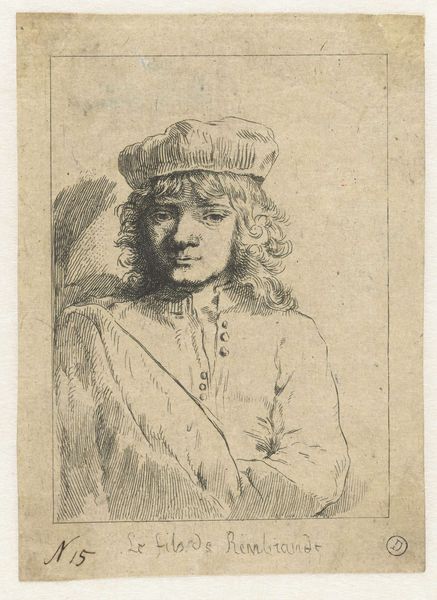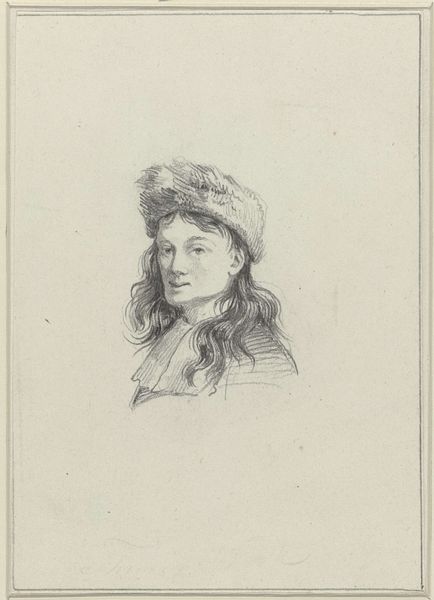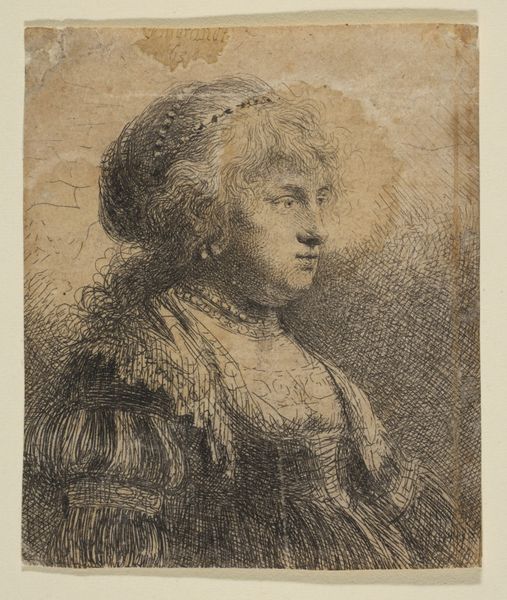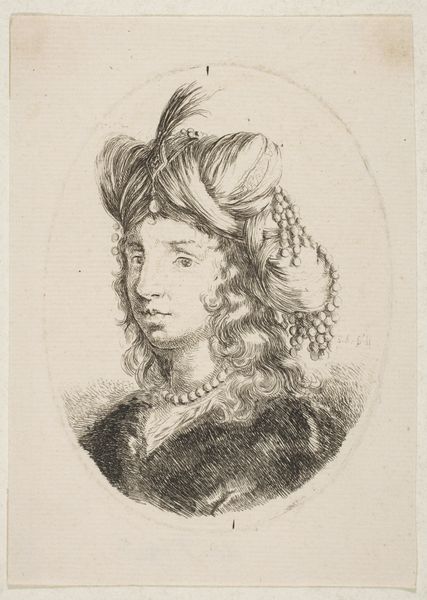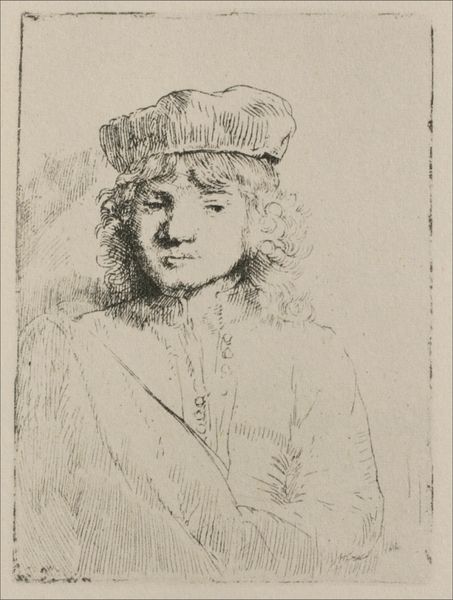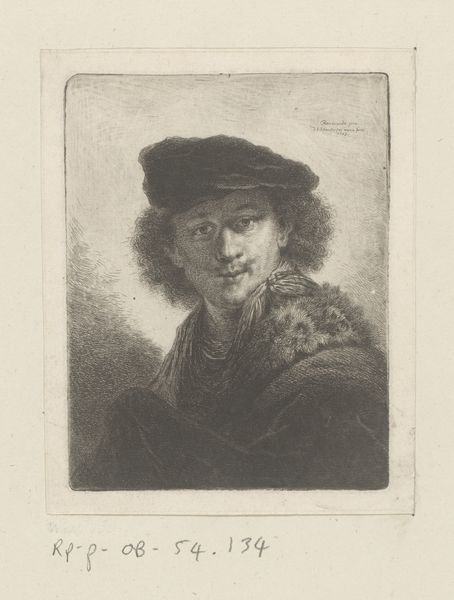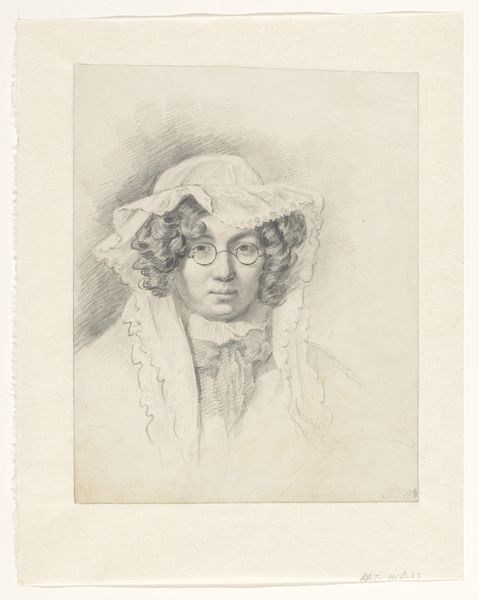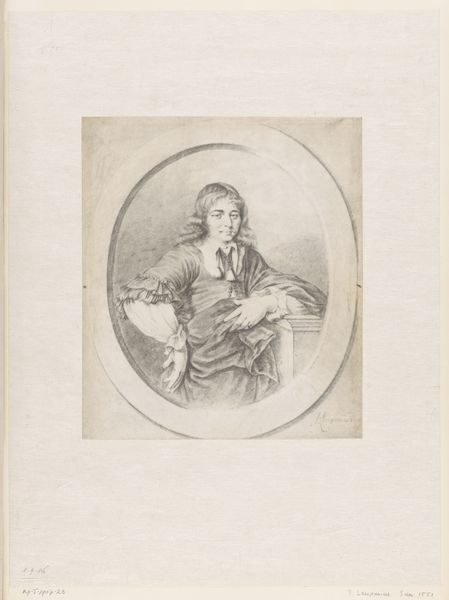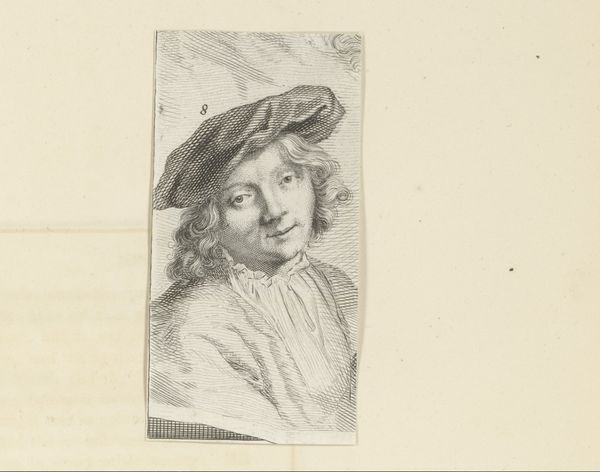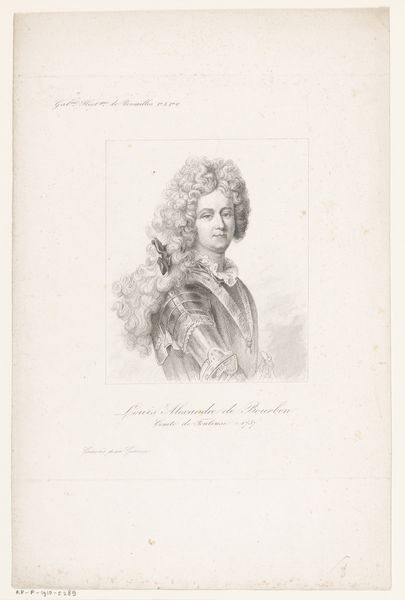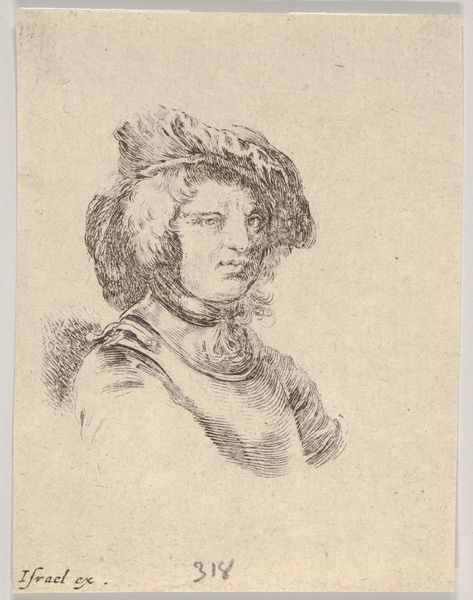
Dimensions: height 118 mm, width 83 mm
Copyright: Rijks Museum: Open Domain
Editor: Here we have "Portret van Titus Rembrandtsz. van Rijn," a drawing or etching by Pierre Jean Mariette, made sometime between 1704 and 1774. It’s an intriguing portrait. The lines are delicate, yet they create a compelling sense of volume, and the subject’s gaze is very direct. What do you see in this piece, focusing on its formal aspects? Curator: The work is an etching, and as such, the very quality of the line becomes paramount. Notice how the artist uses hatching and cross-hatching, that is, parallel and perpendicular lines, to create not only a sense of light and shadow, but also to define form. Where are these techniques most effective? Editor: I think it's clear that they’re skillfully used in rendering the subject's face, especially around the eyes and mouth. But the use of varied linework adds depth throughout the drawing. Curator: Precisely. Consider also the use of blank space. The background is left largely untouched, forcing our eye to concentrate on the figure. The artist guides us toward essential components with great control. Editor: So it is almost like the space itself becomes a compositional element? How the form interacts with that emptiness. Curator: In a way, yes. The artist exploits the relationship to direct visual flow, employing these empty spaces to intensify our focus on the portrayed individual and amplify certain facets of his being through masterful interplay of form and void. Editor: I’m beginning to appreciate how much the success of this work relies on these deliberate artistic choices regarding line and space, setting aside the subject matter for the moment. Curator: Absolutely. Recognizing these choices, that is, form over content, helps illuminate artistic intent, especially within this medium. It challenges us to observe the artist's engagement with light and structure independently of its function as a likeness. Editor: This formal breakdown provides a new level of appreciation for the print's craftsmanship. Thanks for helping me dissect its structure and purpose.
Comments
No comments
Be the first to comment and join the conversation on the ultimate creative platform.
